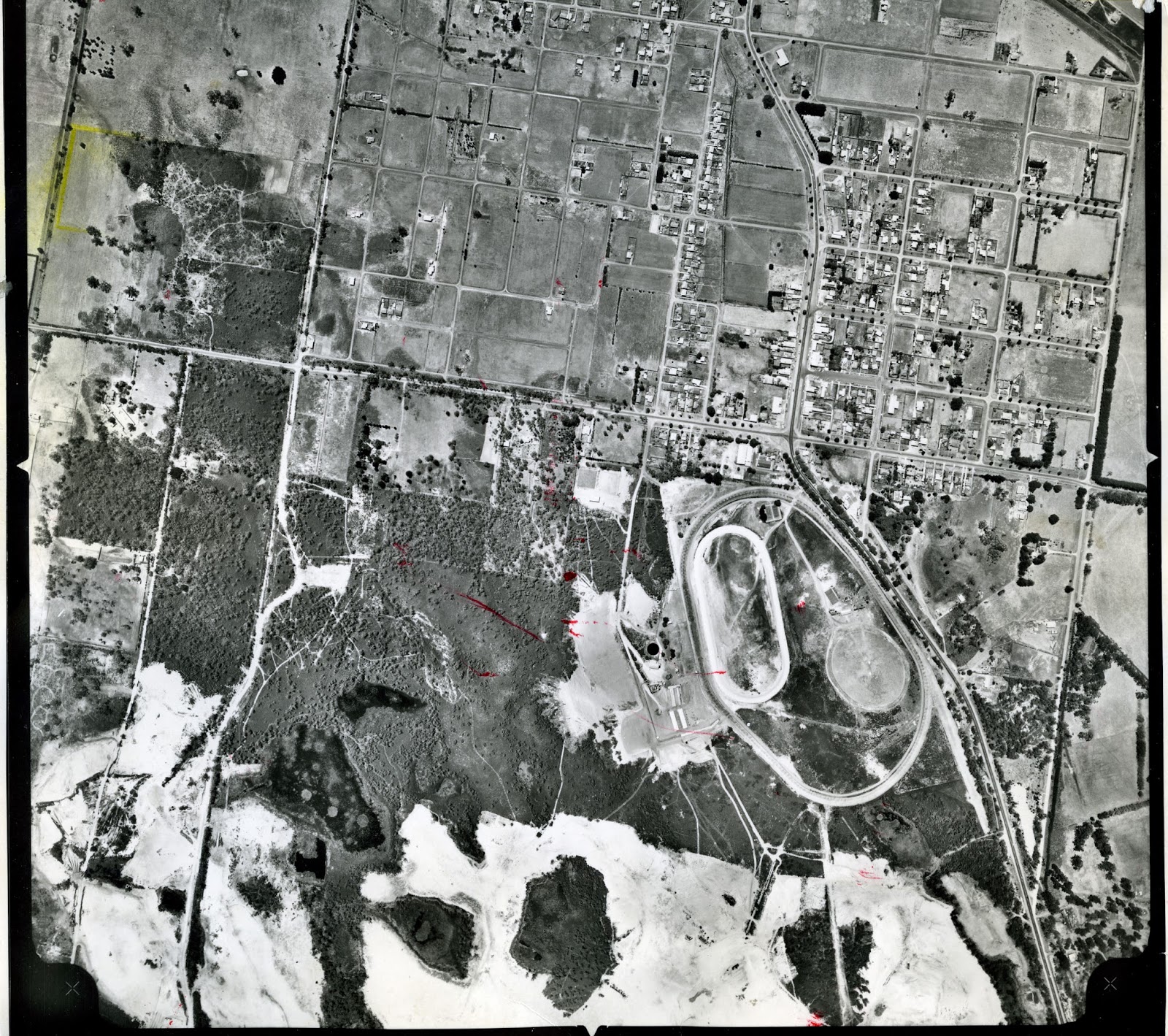The land was developed into a Country Club with a golf course, tennis courts and swimming pool and a housing estate (more on that later). Before the Country Club house was built in 1929, Nobelius' house, Carramar, was used for this purpose. Carramar still exists and is now a private home.
The Argus February 22, 1941 http://nla.gov.au/nla.news-article8175507
Carramar was sold by the Country Club, perhaps in the 1930s when they were alleged to have gone into liquidation. I don't have a photograph of Carramar but I have found this advertisement for the sale of the house in The Argus from February 22, 1941. The house is described as containing three reception rooms, a full sized billiard room, five bedrooms, two bathrooms, excellent domestic and staff accommodation as well as a detached gardener's cottage of six rooms. As the land had the finest collection of trees in the State and was just under five hectares, a gardener was no doubt essential.
Emerald Country Club
State Library of Victoria Image Image H32492/3631
The Emerald Country Club house was completed in 1929 and was designed by Architects Cowper, Murphy and Appleford. Amongst other works they designed the interior of the Sun Theatre in Yarraville (opened 1938); St Moritz ice skating rink (1939); the Dendy Theatre in Brighton (1940); they rebuilt the Regent Theatre in Collins Street to the original design after a fire in 1947 and had also undertaken interior work on the Palace Theatre in Bourke Street in the mid 1950s.
The citation on the National Trust Heritage Register describes the building as The clubhouse design follows the American Craftsman and English Arts & Crafts Bungalow precedents in its use of the low gabled form, local rubble freestone (inside and out), and other natural finishes such as the Marseilles pattern terracotta roof tiles, stained and lacquered timber linings and joinery (interior).... This conscious use of natural material is also reflected in the construction of the log lake-side pavillion (presumed originally roofed with paling/shingle).
When the Club first started the membership was limited to those who purchased land in the surrounding estate which was created by the establishment of Elm Crescent, Poplar Crescent, Sycamore Avenue, Oak Avenue, Nobelius Street and Lakeside Drive, which lead into the Club. A number of houses built from the 1920s on this estate still remain. You can find out more information about these houses and some of the significant trees here on the Australian Heritage Database.
The citation on the National Trust Heritage Register describes the building as The clubhouse design follows the American Craftsman and English Arts & Crafts Bungalow precedents in its use of the low gabled form, local rubble freestone (inside and out), and other natural finishes such as the Marseilles pattern terracotta roof tiles, stained and lacquered timber linings and joinery (interior).... This conscious use of natural material is also reflected in the construction of the log lake-side pavillion (presumed originally roofed with paling/shingle).
When the Club first started the membership was limited to those who purchased land in the surrounding estate which was created by the establishment of Elm Crescent, Poplar Crescent, Sycamore Avenue, Oak Avenue, Nobelius Street and Lakeside Drive, which lead into the Club. A number of houses built from the 1920s on this estate still remain. You can find out more information about these houses and some of the significant trees here on the Australian Heritage Database.
The Country Club, Emerald
State Library of Victoria Image H32492/1154
The Country Club went through various owners - in 1932 club members formed a new Company to purchase the golf course and Club house - the asking price was 14,850 pounds. Five years later another Company was formed and the asking price had halved to 7,000 pounds. In the 1970s the golf course was enlarged to 18 holes and it still in existence today. More of the history of the Club can be found on the Australian Heritage Datebase entry referred to above.
Ist fairway Country Club, Emerald
State Library of Victoria Image H32492/3532

Women's Weekly May 9, 1956 Trove http://trove.nla.gov.au/newspaper Photographer: John Askew.
This picture is from the Women's Weekly of May 9 1956 and shows Mr Clifford Wright watching an iron shot by Mr Ray Hawkins at the Emerald Country Club. The caption also mentions some of the features of the Club including tennis courts, a natural lake (ideal for swimming and fishing), bowling and putting greens, a scenic golf course with some of its fairways carved out of dense forest.
I have created a list of newspaper articles about the Emerald Country Club on Trove, click here to access the list.
I have created a list of newspaper articles about the Emerald Country Club on Trove, click here to access the list.






















